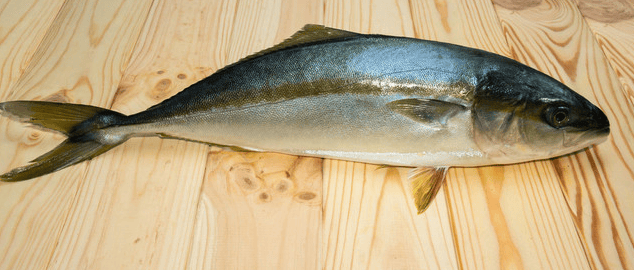Hanna is an important economic fish, also known as octopus, safe fish, yellowtail, etc. It is a warm-water deep-sea fish. In terms of biological classification, they belong to the animal kingdom, the phylum Chordata, the class Teleost, the order Perciformes, the family Trollidae, and the general name of marine fish of the genus Amberjack. There are about 9 species in the world, which are widely distributed in tropical and subtropical seas. The representative species are Tall amberjack, yellow-tailed amberjack, long-finned amberjack, etc.
Morphological characteristics
The body of the hamachi is oblong, with high sides; the head is flat; the mouth is large and slanted, and the cleft starts at the horizontal line slightly below the lower edge of the eye; the cusps of the teeth are thin. , 3 to 6 rows of teeth in the front of the maxilla, 3 to 4 rows of teeth in the front of the mandible, and 2 to 3 rows of teeth on the side; the cheeks, upper part of the operculum, chest and body are all covered with small round scales. The lateral line is slightly curved, there are no ridged scales on the lateral line, and there are weak skin ridges on both sides of the caudal peduncle; there are 2 dorsal fins, the first dorsal fin is short and the second dorsal fin has a long base; the anal fin is the same shape as the second dorsal fin and is shorter; the pectoral fin is wide and short; the pelvic fin is pectoral. position, longer than the pectoral fin; the body is grass green with brownish purple, there is a golden longitudinal band on the side of the body from the tip of the snout to the caudal fin, the dorsal fin, anal fin, pelvic fin and caudal fin are yellow-green.

Distribution range
Hamachi is widespread Distributed in tropical and subtropical seas, including the Mediterranean Sea, Arabian Sea, Bay of Bengal, South China Sea, Philippine Sea, East China Sea, Sea of Japan, Banda Sea, Coral Sea, Caribbean Sea and other seas. In my country, it is mainly distributed in the South China Sea, East China Sea and Yellow Sea. Japan has decades of breeding history and has become the number one economic fish species in Japan's seawater cage fish farming production.
Living Habits
1. Environment: Hamachi is a warm-water fish. It often moves in groups in the middle and upper layers of shallow waters. It lives in water depths of 18 to 36 meters. The suitable water temperature for growth is 20-30℃. The growth stops when the water temperature is below 15℃. It dies when the water temperature is below 10℃. The optimum salinity is 20-25‰.
2. Food habits: Hamachi is a carnivorous fish that mainly feeds on crustaceans, cephalopods, small fish, etc. Among them, juveniles mainly feed on shellfish larvae, sea urchin eggs, and arm tail wheels. They feed on insects, etc., and young fish mainly feed on copepods, crustaceans, cephalopods, fish, etc.
3. Migration: Hamachi migrates from south to north from spring to summer, and from north to south from autumn to winter.
Reproduction method
Hamachi is an oviparous fish. It spawns in the East China Sea from 2 to 3 months. The eggs are floating and fertilized outside the body. Under moderate temperature conditions, the eggs are about Incubate after membrane rupture in 48 to 75 hours. The young fish migrate north to near Hokkaido and feed for three to five years. The gonads of hamachi are generally fully mature in the third instar; they then migrate south to spawn.
Food value
1. The meat of hamachi is very sweet, the fat is plump, and the oil content is very large.
2. Hamachi contains protein, a variety of mineral elements, and is also rich in vitamins.
3. Hamachi is rich in DHA, which plays an extremely important role in the human brain.

Home cooking
Fried hamachi Fish
1. Remove the head and tail of fresh hamachi, remove the intestines, remove the fish bones, take the fish fillets and cut them into pieces.
2. Cut the fish fillet into smaller pieces and put them in a bowl.
3. Add ginger paste, mirin, cooking wine, and strong soy sauce to the fish fillets, mix well and marinate for 15 minutes.
4. Coat the marinated fish fillets evenly with katakuri flour (potato starch).
5. Pour an appropriate amount of oil into the pot, the oil temperature is 70% hot, add the flour-coated fish pieces and fry.
6. Fry the hamachi until golden brown and take out the hamachi.
7. Place the drained hamachi on a plate and squeeze some lemon juice on it before eating.

 扫一扫微信交流
扫一扫微信交流
发布评论